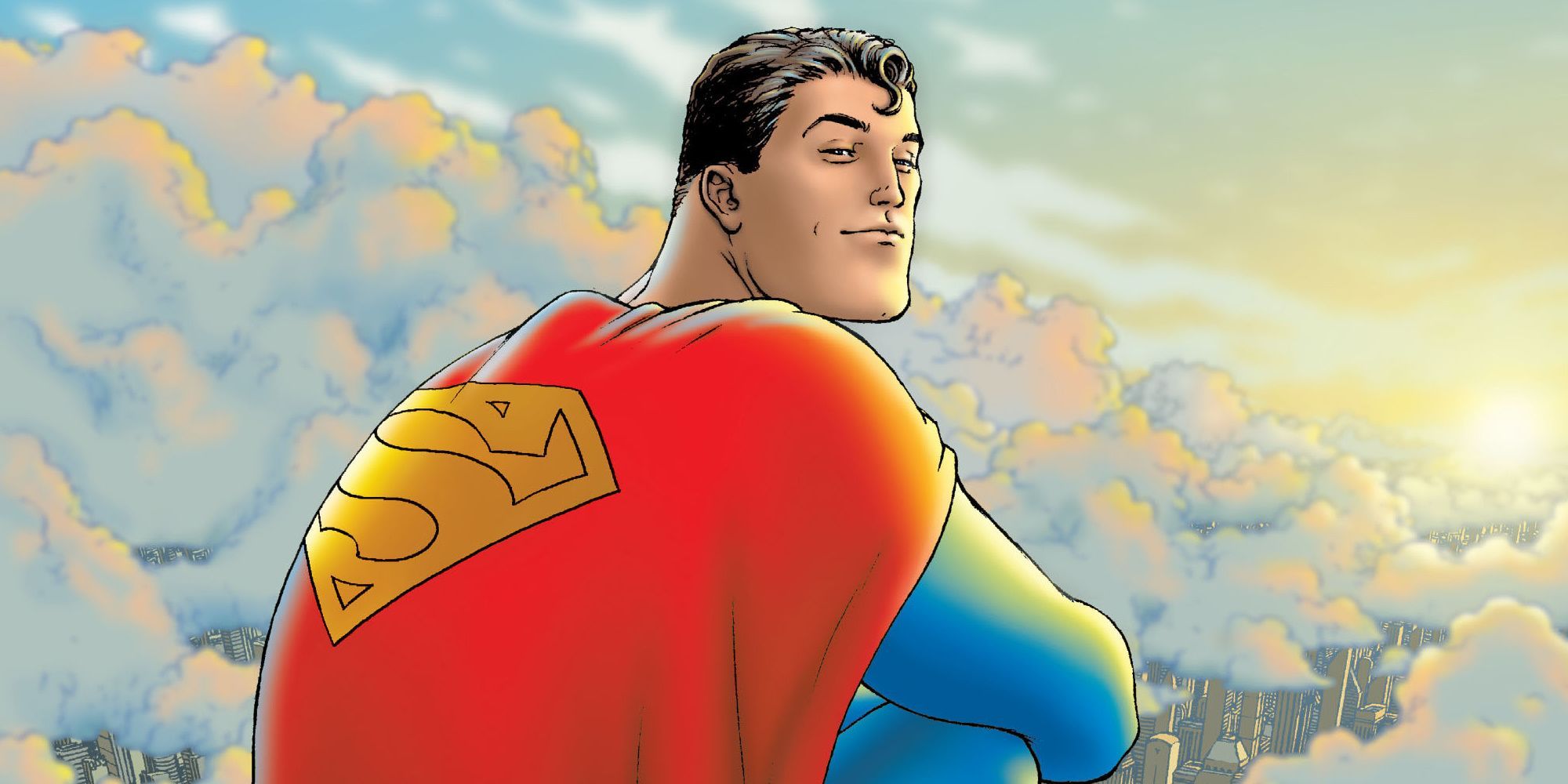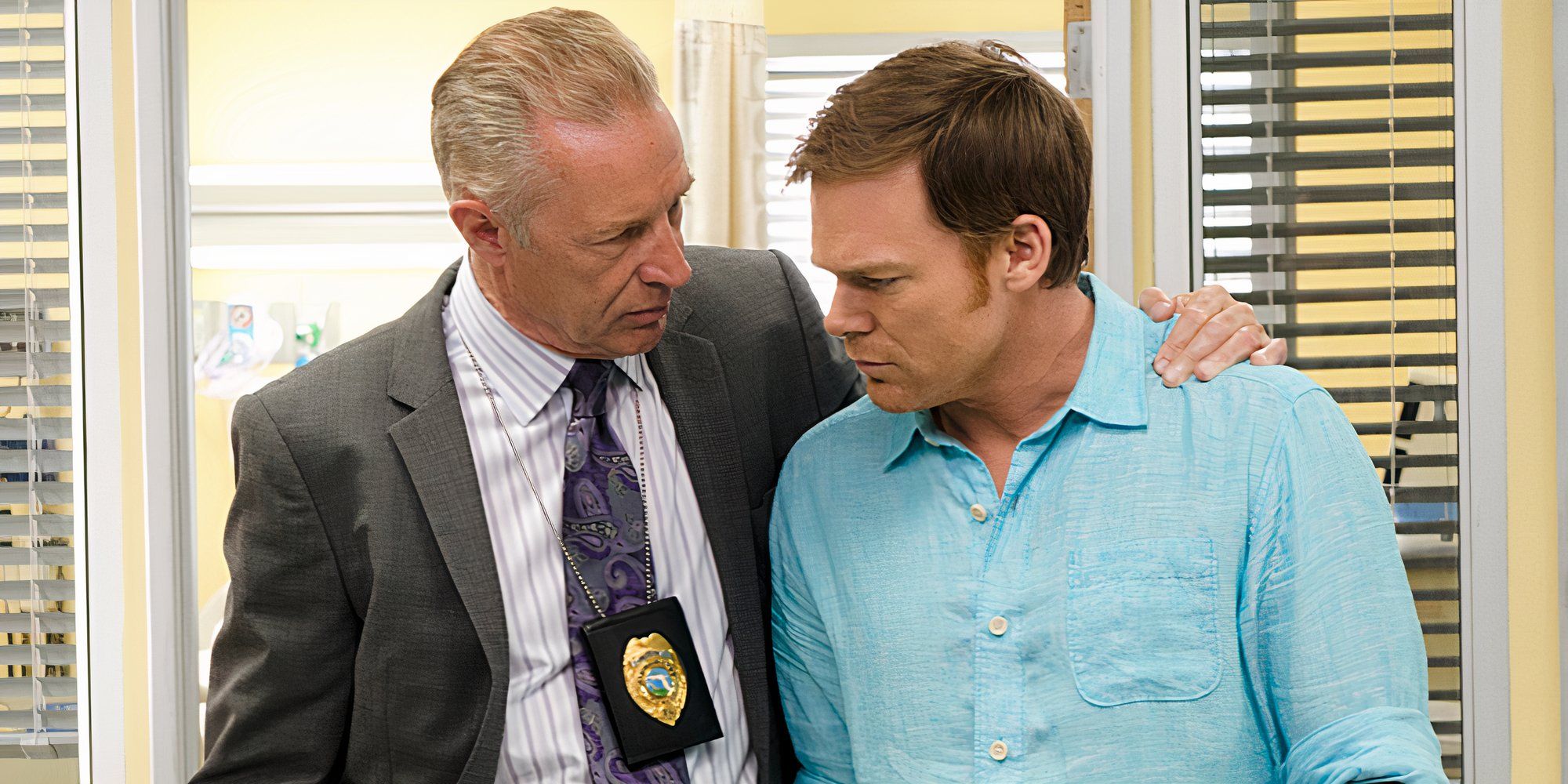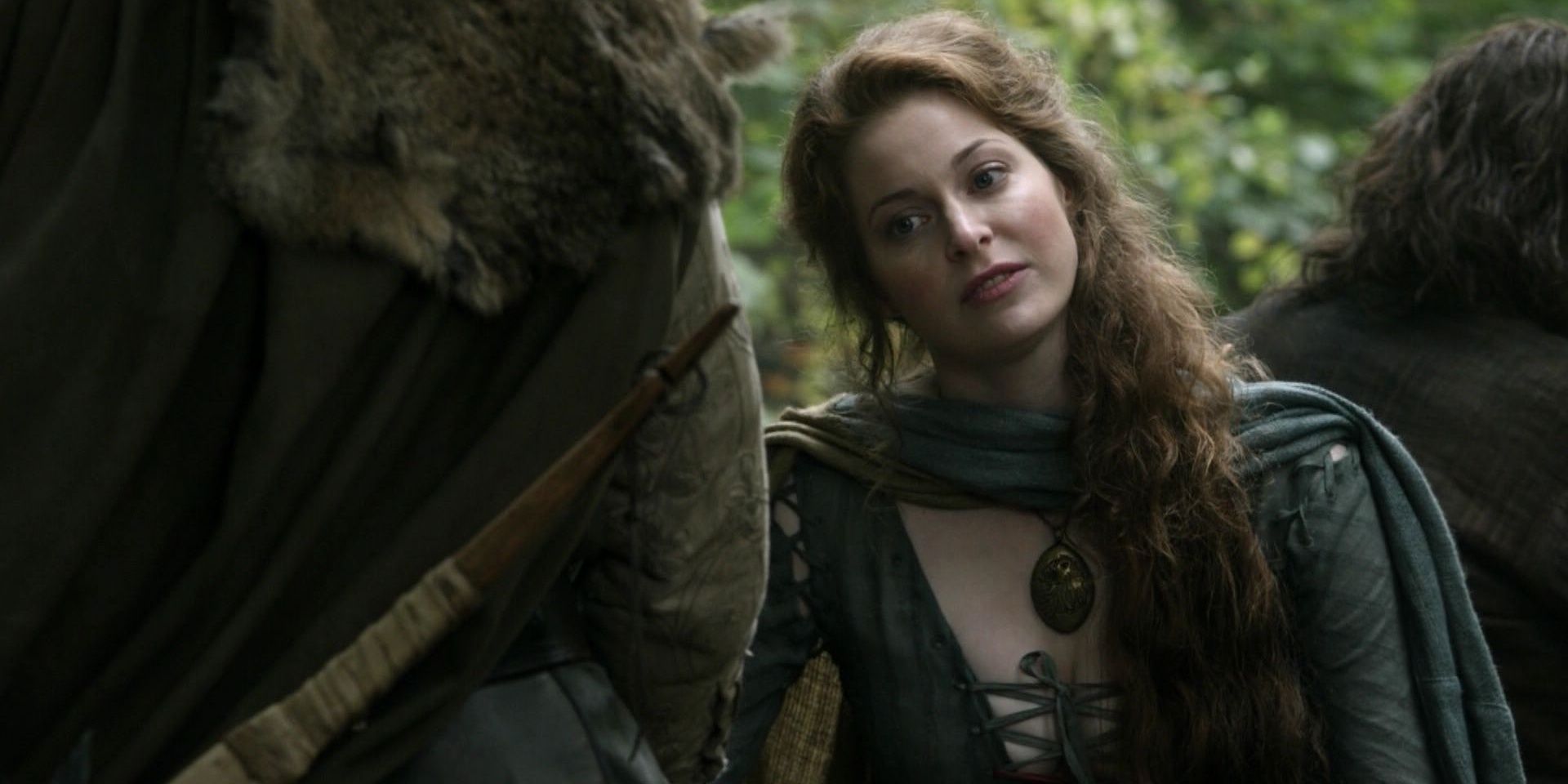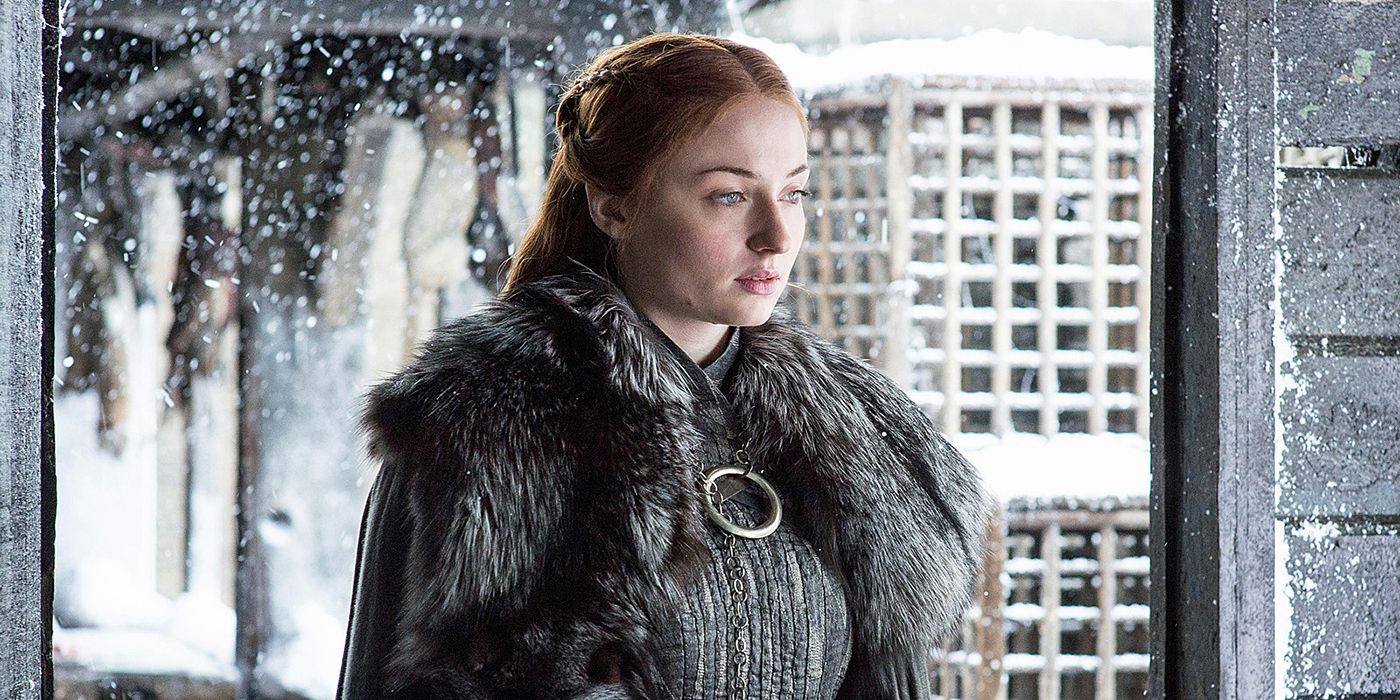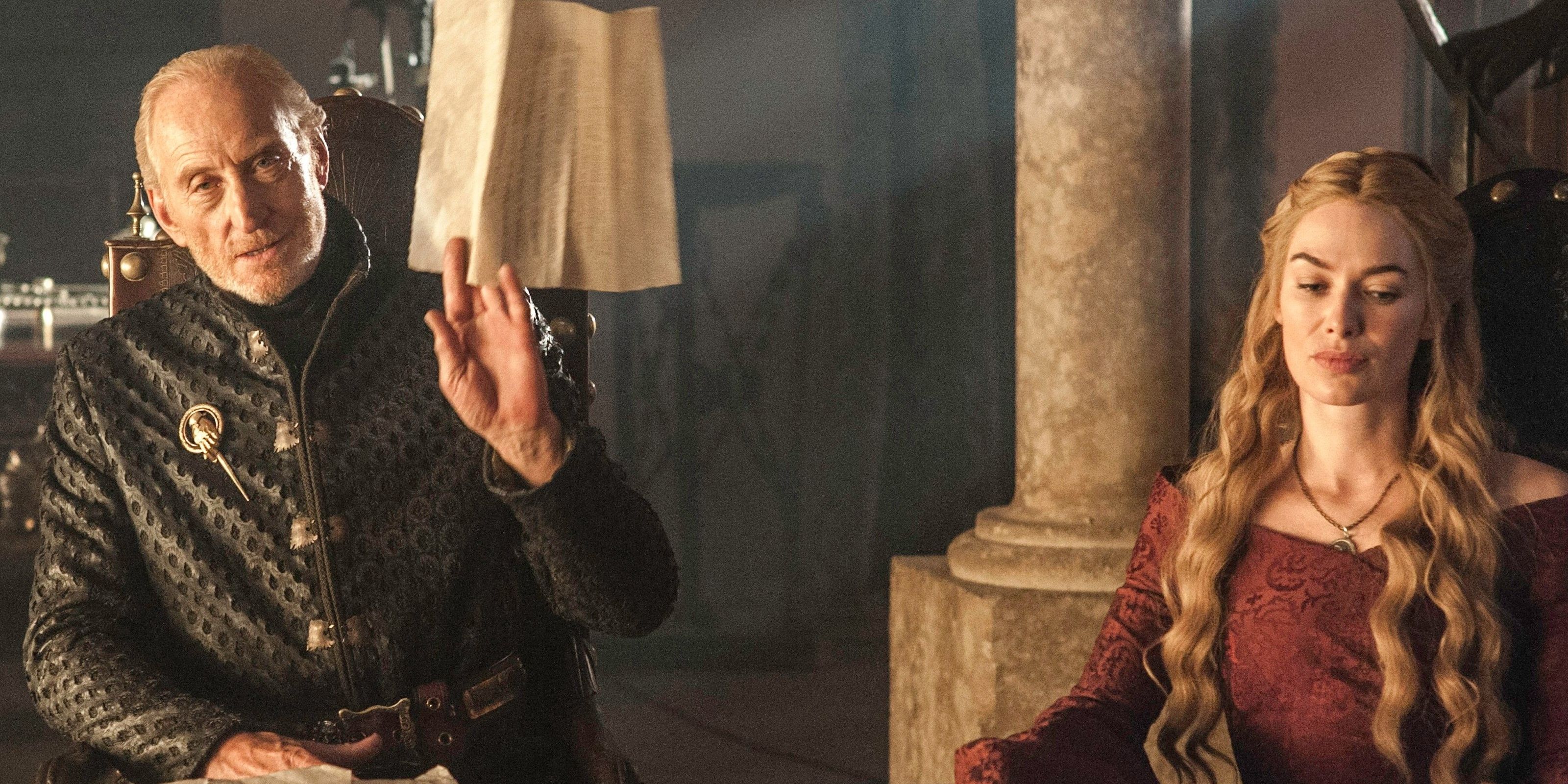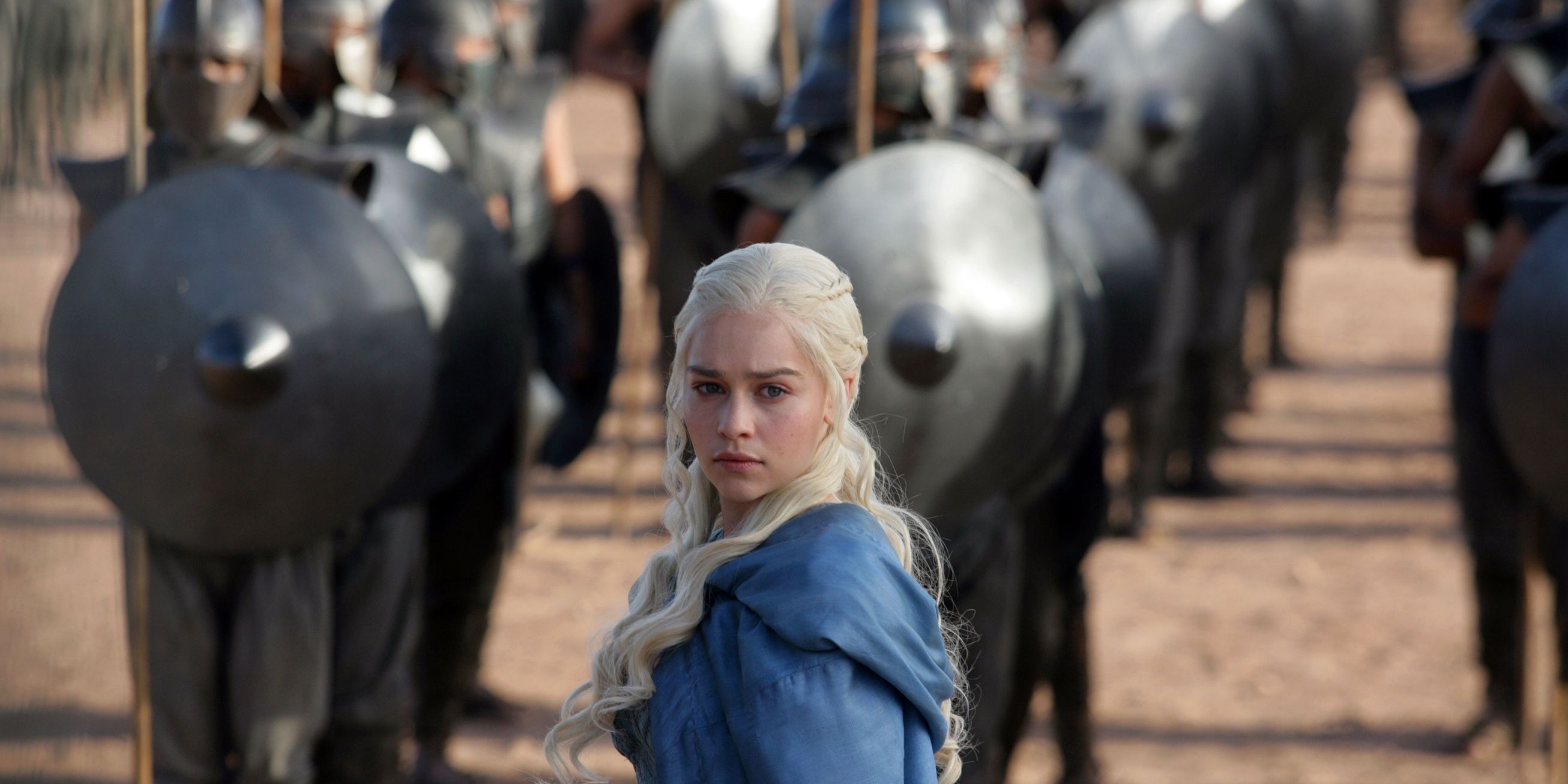It is likely that audiences and critics will be rehashing and dissecting the multifarious failures of Game of Thrones for decades to come. The blockbuster fantasy series distinguished itself as the blueprint for cable/streaming success, yet eight years of acclaim (and Emmys) could not prevent the series from obliterating its entire legacy with a finale that will probably be remembered as one of the most spectacular crash landings in television history.
For some viewers, however, the failures of Game of Thrones began much earlier—particularly in the way the show treated the female characters from A Song of Ice and Fire. By compressing the women of ASOIAF into stock fantasy characters, Game of Thrones eliminated much of what was good about the books, replacing character agency and complexity with flat tropes and fundamentally weakening the story as a whole.
Prevailing social theory holds that reducing the participation of women in society reduces the overall strength of a nation; the same could be said of Westeros, as represented on screen. George R.R. Martin has his faults as an author, but characterizing women is not one of them (despite common stereotypes about the fantasy genre as a whole). The female characters of A Song of Ice and Fire are generally well-rounded, authentic, and even narratively powerful—as essential to the story as the male protagonists, usually portrayed with the same care and nuance (or outright deplorability, as Sansa, who is no less likable for being a woman than her canon foil, Theon). Even in its first season, Game of Thrones failed to replicate that attention to character, flattening the women from Martin’s story into convenient narrative touchstones—as easily recognized as they are subsequently dismissed. From minor details of appearance to critical arcs in plotting, here are five ways that Game of Thrones misrepresented the women of Westeros…and thus sealed the show’s downfall.
Glamorizing Maggy the Frog
Any readers of A Song of Ice and Fire who were still expecting verisimilitude by Game of Thrones Season 5 would have been surprised to see the withered crone in Cersei’s flashback interpreted as yet another attractive, relatively young actress (Jodhi May, who has since been celebrated for her portrayal of Queen Calanthe in Netflix’s The Witcher). For most fans, however, the appearance of Maggy the Frog was just another in what was, by then, a long line of casting decisions that seemed focused on ensuring no woman ever appeared onscreen without enhancing the aesthetic—or, rather, without promoting a fantasy ideal of beauty, which is iterated throughout the ensemble, from the highest antagonist to the lowest prostitute.
Using Ros’s body casually
As early as its first season, Game of Thrones was recognized for establishing a new convention: ‘sexposition,’ in which lengthy monologues filling in background for the fantasy world were paired with images of minor characters—usually women, almost always nude—in sexual scenarios. At first, viewers could ascribe this convention to HBO’s reputation (which was built on R-rated content like The Wire and Sex and the City), but as the show drew in new audiences through pirating and streaming, its liberal nudity no longer seemed necessary…or warranted.
Game of Thrones’ own cast members have even commented on this issue—especially Emilia Clarke, whose outspokenness about the show’s disparity between male and female nudity coincided with a significant decrease in Daenerys’s nude scenes. Still, the prevalence of naked women in Game of Thrones stripped some of the subtlety of ASOIAF’s narrative deployment of the same: Cersei’s walk of shame, for example, should have stood out as a moment of paramount public shaming—her nakedness underscores the humiliation of being metaphorically exposed in her sexual machinations. Instead, it was just another nude scene in a show characterized by nudity.
Turning Sansa into a classic Final Girl
Sansa Stark is a difficult character to love—especially in the books, where no nadir of betrayal or loss cuts deep enough to prompt her to look inward and grow as a character. The most charitable reading might suggest (fairly) that she is in survival mode, and her psychology as a victim is worth examining in its own right. What requires little examination, however, is the cause of her distress; the monstrosity of her antagonists is stipulated.
Yet Game of Thrones chose to linger—at length and in excruciating detail—on the violence of Joffrey, then Ramsay, turning them into the narrative centerpieces of Sansa’s story. Rather than explore the psychological state of Westeros’s most ill-fated fiancée, the series injects scene after scene of atrocity—of sexual violence against women—to make a point that nobody doubted in the first place. Nor is Sansa the only female character reduced to her victimhood (indeed, Sansa’s storyline in late seasons includes a turn towards empowerment that the books have not yet implied). She is simply the most prominent character to be subjected to the terrorism which the show seems to revel in—if not glorify—by its thorough depictions of undisputed villains.
(Falsely) Empowering Cersei
Cersei Lannister’s transformation into a primary antagonist was one of Game of Thrones’ biggest departures from its source material—and one of the most detrimental changes to the story. On the one hand, the series’ writers elevated the character, infusing her with a shrewdness that book Cersei lacks, which made her a more compelling villain. Yet they also highlighted the powerlessness of her situation, going so far as to invite the audience to root for her success over less-developed characters like the Tyrells. The problem with positioning Cersei as a cunning political player, however, is that she was never meant to prevail—Cersei persists in being deliberately ignorant of (what should have been) the true threat, the White Walkers, so her scrambling to maintain what power she has managed to grasp is ultimately meaningless.
Moreover, empowering her character along a more traditional arc disregarded the ways in which Cersei was already empowered by ASOIAF—notably, her sexual agency. In A Feast for Crows, Cersei has an ongoing affair with a noblewoman, Taena Merryweather, who is left out entirely from Game of Thrones. Cersei is wholly in control of that relationship (which, of course, she is using for political gain), as she is in every minor dalliance, as well as her romance with Jamie. Yet Game of Thrones chose to frame Cersei as someone with limited sexual agency—even going so far as to transform a consensual encounter with Jamie into rape.
Victimizing Dany
Unfortunately, turning consensual encounters into rape was something of a trend for Game of Thrones—beginning with Daenerys’s wedding night in Season 1. Here, however, it is worth pausing to contextualize the overall construct of age and consent in ASOIAF. Following a common convention of fantasy, the characters in the books are much younger than their series counterparts, and, as a result, concepts like age and consent do not follow the rules to which audiences are accustomed. There is an argument to be made that any sense of agency thirteen-year-old Daenerys might have in her non-consensual betrothal to Khal Drogo is illusory, that Khal Drogo’s subsequent disregard for his child-bride’s experience is irredeemable, and that Dany never had any sexual agency in the first place.
But that argument elides the real issue with Game of Thrones’ representation of Dany’s story—with the series’ representation of women generally. Regardless of the moral valence of her circumstances, Dany’s marriage to Khal Drogo exhibits, at least from her perspective, a dynamic shift from passive participant to active leader—a shift that will be echoed in her conquest of Essos and her larger journey. By turning her husband into a rapist, the show limits its audience’s ability to invest in that perspective as she seeks to build genuine intimacy with him, then save his life, then soldier on as a grieving widow. More importantly, if the audience cannot invest in Dany’s perspective through that first arc, they cannot regard her as the savior figure that she ought to have been.
These issues—particularly the shifted power dynamics of Cersei and Dany—reflect the structural weaknesses that proved fatal to Game of Thrones’ final season. Regardless of what kind of ending Martin originally had in mind for ASOIAF, audiences can reasonably infer an ordering of importance to the characters in the books, which suggested a different finale than what the show delivered. In the final episodes, it seemed as if the writers had lost sight of this hierarchy, turning the obvious B plot (defeating Cersei and taking the Iron Throne) into the A plot, and leaving its resolution for last. Audiences might forgive that confusion, however, in light of the fact that the show’s flaws foreshadowed it from Season 1.
Of course Dany went mad; she was a victim of several generations of trauma, which made her unfit to rule. Of course Cersei was more important than the White Walkers; her struggle for control was always explicit, while the mysterious Night King mustered his shadowy army offscreen, with no hints being dropped about his character or motives. Of course Sansa should be Queen of the North; it is her reward for escaping sexual violence (a common substitution for actual character development). By rendering only pale imitations of the complex women in ASOIAF, the series reduced its options for satisfying conclusions: Game of Thrones substituted its female characters with tropes, then cobbled together a finale from their clichés.


